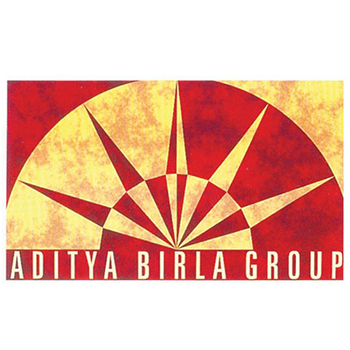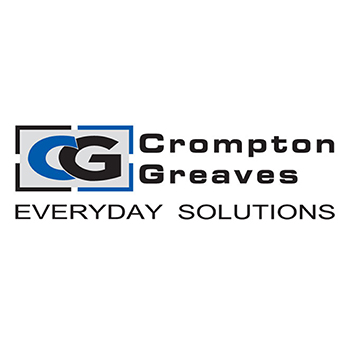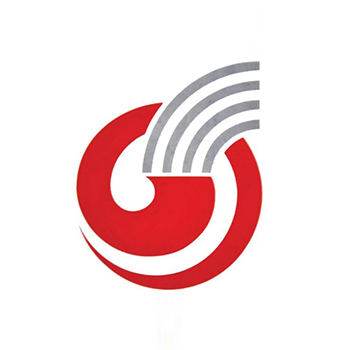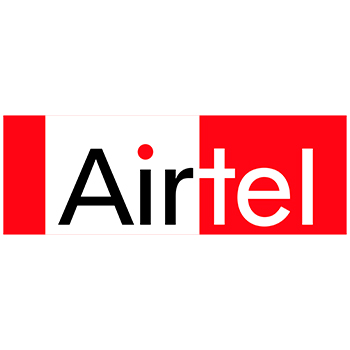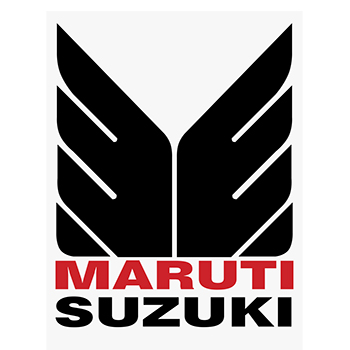Graphic Logos
Erstwhile Logos Of India
(13 items)
Graphic LogosErstwhile Logos Of India
(13 items)
(13 items)
Aditya Birla Group
by Vyas Gianetti Creative
by Vyas Gianetti Creative
The idea behind the form of the logo is the ‘Rising Sun’ signifying rising business, vision and Aditya Birla Groups architecture as a strong brand against other competitors. The combination of deep Indian Red with the golden yellow flamed up tone in the facets of the sun rays seals the concept and Aditya Birla’s shining repertoire with vibrance, richness and over-powering visual. The new logo is the same form and colour unit, but with an enhanced warmth. The modern, bold typography in the group name signature of the logo compliments the increasing strength of the group in present times.
Details >>Bajaj Auto
by Unknown
by Unknown
Bajaj Auto (BAL) - Launched as M/s Bachraj Trading Corporation Private Limited in 1945, it received government’s licence much later in 1960 to manufacture two and three-wheelers for Indian Auto market. Henceforth, it became Bajaj Auto Limited (BAL).The ubiquitous hexagonal Bajaj logo elucidated the two-wheeler and three-wheeler product range of the company. The hexagonal form of the logo makes it a compact, harmonious unit that confirms the underlying USP of Bajaj brand - “Buland Bharat ki Buland Tasveer….. Hamara Bajaj”. In english, it meant ‘Strengthened (cultural context) India’s Strong Image….. Our Bajaj’. Hence, the hexagon beautifully encaptures the multi-dimensional spirit of India’s culture and ideology.
Details >>Crompton Greaves Consumer Electricals Limited
by Unknown
by Unknown
Crompton and Greaves - The old logo was designed in late 60s when the government sealed the name ‘Crompton Greaves Limited’ (as a conglomeration of Greaves Cotton and Crompton Parkinson Limited. The old logo presenting the initials C and G interlocked inside a box appear like a trademark standing for the company’s finished electrical products, systems and maintenance of an industrial productivity and sustenance through quality. The interlocking of the two letters signifies the strong bond of trust and reliability which Crompton Greaves has fulfilled since 1937.
Details >>CEAT (company)
by R. K. Joshi
by R. K. Joshi
The simple rhombic shape showcasing CEAT was designed in 1983 by Late Prof. RK Joshi. The erstwhile form signified performance, style, strength and durability of CEAT Tyres. The tag line Born Tough extended the significance of the logo further. The two triangles bracketing the word CEAT marks its exclusivity among tyre brands of early 80s when CEAT emerged as one of its first kind. The simple bold letters of CEAT establish a premium position of the products in the market then. CEAT now has a new logo having bold, more geometric characters with simplified lines showing changing perception of speed and mobility of tyres in present era
Details >>Fevicol
by M. Swaminathan
by M. Swaminathan
Since 1959, Fevicol has been giving consistent quality of adhesives. The breakthrough came in ‘70s with launch of a 30 gm. collapsible tube for use by school students and other professionals. The brand concept of using elephants trying to break the Fevicol ka jod (fevicol bond – a tagline in the ever-creative ad commercials by O&M), retains the Indian way of creating humor and establishing the strength of product feature. The concept of eternal ‘Bonding’ has created such a strong equity for the brand, that now people ask for Fevicol and not other adhesives. Similarly, the typography of the word Fevicol seamlessly bonds the letters together.
Details >>Hindustan Unilever
by Ray + Keshavan
by Ray + Keshavan
Hindustan Lever came into existence in 1956, launcing the logo in the same year itself. The erstwhile logo signified stability and a robust image for the company. The use of bold typography in letter ‘H’ having a foundation of a steady effect of an angular, growing leaves (letters LL depicted) has a strong recall with added clue of ‘Hindustan’ word.The dark green colour of the logo leads to an evergreen appeal in the visual, that has high recall value even in current times. With new merger, the company became Hindustan Unilever Limited in June 2007. The new logo acquires a new visual treatment of using 25 icons (signifying the organization, brand and its new theme of vitality) inside the letter ‘U’. The idea of single-letter identity has been reused, but with a new graphic treatment celebrating the concept of ‘versatility’ and ‘vitality’ as the company’s new brand image in the current times.
Details >>ICICI Bank, Bombay Branch
by Sudarshan Dheer
by Sudarshan Dheer
Founded in 1994, ICICI bank and its services have been beautifully presented by the forms on the logo. The circular spiral represents the revolutionary efforts to create great investment banking, insurance, venture capital and investment management schemes. The glory of the revolution has been depicted as an emerging flame of lines, moving upwards with a confidence of growing with course of time, depict the increasing reach of bank services not only in India but overseas
Details >>India Post
by R. K. Joshi
by R. K. Joshi
The corporate logo of India Post was first launched on India Post Day, 9th Octuber 1993. It represented speedy action and dynamism. The logo also shows the skill and good sense of aesthetics in form of an appealing asymmetric balance in the form. The form is an envelope, the straight parallel lines with sharp angular ends represent the speed with which the postal India services transfers posts across the length and breadth of India. The colour Red signifies the depth of its reach in India. Red adds extra prominence to the speed concept of postal services for which the logo stands for.
Details >>Indian Airlines
by Benoy Sarkar, NID
by Benoy Sarkar, NID
Flying in the Air has been man’s greatest wish and an obsession since the advent of aeroplane. The connection could also be seen in images of winged Gods, Goddesses and other mythological figures. In 1932, JRD Tata started the airlines, the national flag carrier airlines of India. With 147 airliners serving 95 destinations, Tata airlines was rapidly developing the business. But, initially the Tata Tag itself served as a corporate symbol for the aircrafts. The logo was developed post 1946 (World War II). The Typographic beauty with a simple sliding crossbar of the letter ‘A’
Details >>Airtel
by Ray + Keshavan
by Ray + Keshavan
The erstwhile logo symbolically shows a mobile phone. The screen depicts the word ‘Air’ connected to the red body presenting ‘Tel’ (the network that suits your ‘Tel’ – phone). To seal the unity of red with white the red dot of ‘i’ creates a perfect balance. The communication is direct and convincing. The alternating red and white bars lead to it being popularly known as a flag logo in the advertising circuit. From typographic point of view, a clean, upright and confident character style adds to the simpilicity and elegance of the logo.
Details >>Kissan Products
by Sudarshan Dheer
by Sudarshan Dheer
The logo effectively captures the ethos of the company and its products, applied harmoniously across complete product range of Kissan. The quality of Kissan products have created a strong image for the brand. The logotype ‘Kissan’ exudes the same quality of superior product features that all its products provide with. The letter ‘K’ represents tongue and the palette (the two sensory organs giving us the ability to taste food). The action of applying Jam on toast has been the inspiration to churn out an iconic form of the curve, placed beneath the logotype to give it a formal balance.
Details >>Maruti Udyog Limited (now known as Maruti Suzuki Private Limited)
by Ramesh Mule, Rediffusion Ad Agency
by Ramesh Mule, Rediffusion Ad Agency
The logo was designed when Maruti Udyog Limited was launched in 1981. It was created to signify an efficient public transport system in India. According to the automobile industry records, only two companies made cars in India, namely Premier Automobiles Limited and HM (Hindustan Motors). However, in 1983, the entry of MUL (Maruti Udyog Limited) revolutionized the car market scene in India. The Typographic symbol as letter ‘M’ having the texture of tyres inside the form signify Maruti’s traditional theme of providing good quality cars with latest technical aspects and durability. Briefly, the symbol communicated a ‘value for money’ feature of Maruti cars. Recently, Maruti has been trying to transform its old image of a small, compact cars to more aggressive appeal. With the failure of Maruti Baleno due to competition in the market, Maruti Udyog has now become ‘Maruti Suzuki’ (a joint venture between Udyog and Suzuki Corporation Limited) of Japan.
Details >>MindTree
by Siegel+Gale
by Siegel+Gale
Mindtree is an Indian multinational information technology company headquartered in Bangalore. It was founded on 18 August 1999. A youngster from Karnataka, who has physical disabilities created the company's first logo. On September 28, 2012, Mindtree unveiled a new logo and brand identity that were created by Siegel+Gale. The bright colours red, yellow, and blue used in the MindTree logo make it particularly attention-grabbing. The graphic identity of MindTree embodies the DNA of the company: inspiration, activity, and joy. The blue upward sweep represents boundless invention. Action is represented by the red background, while happiness is represented by the yellow dots. Chetan, a member of the Spastics Society of Karnataka, created this logo. Chetan has discovered that his cerebral palsy does not limit his smart, imaginative intellect.
Details >>